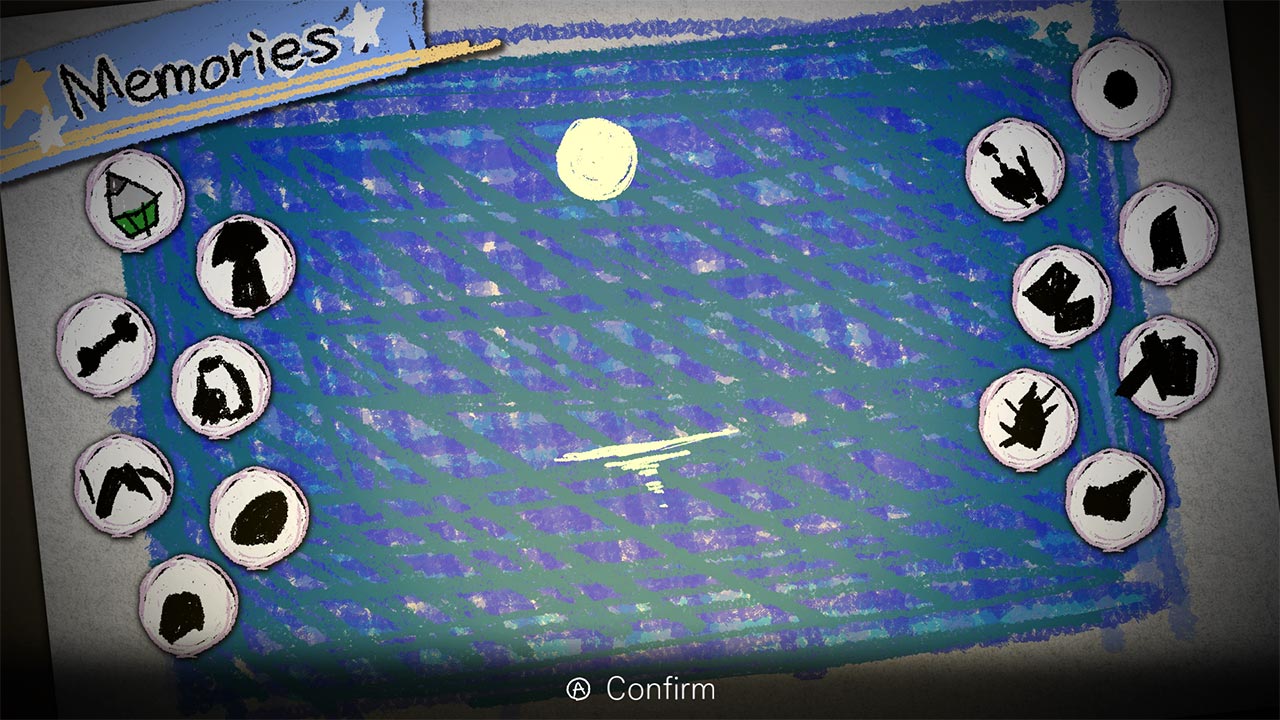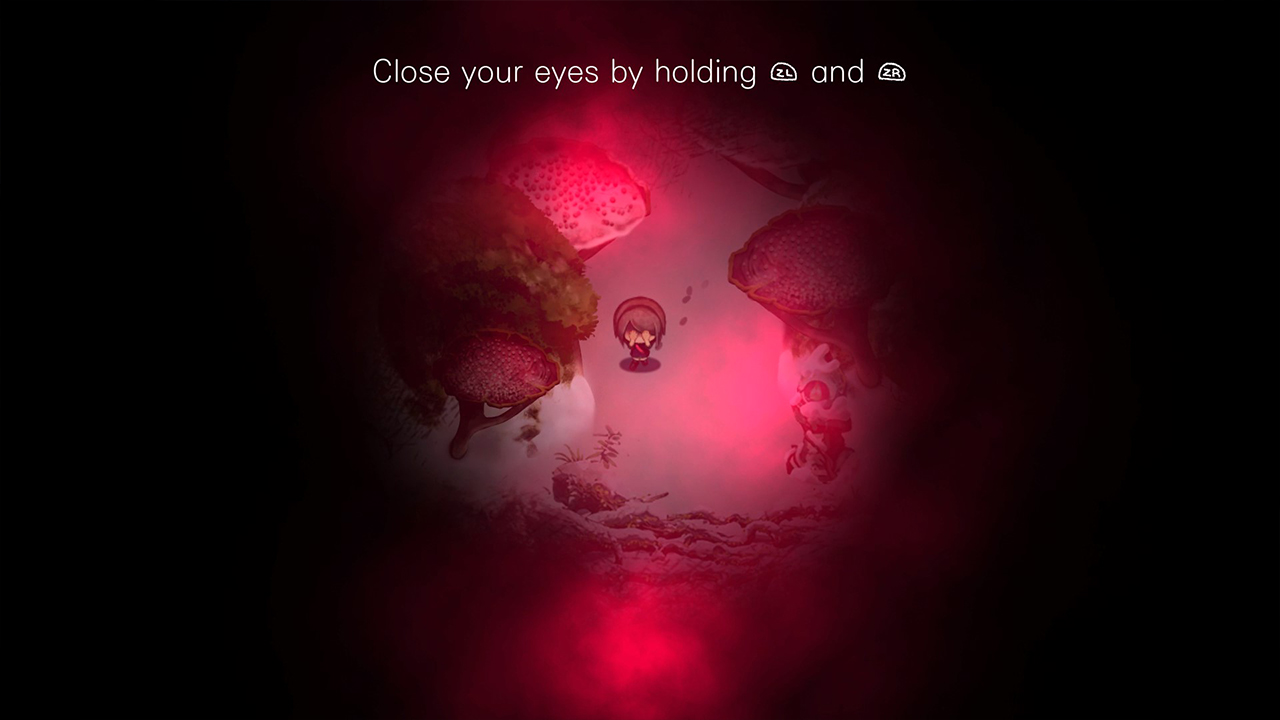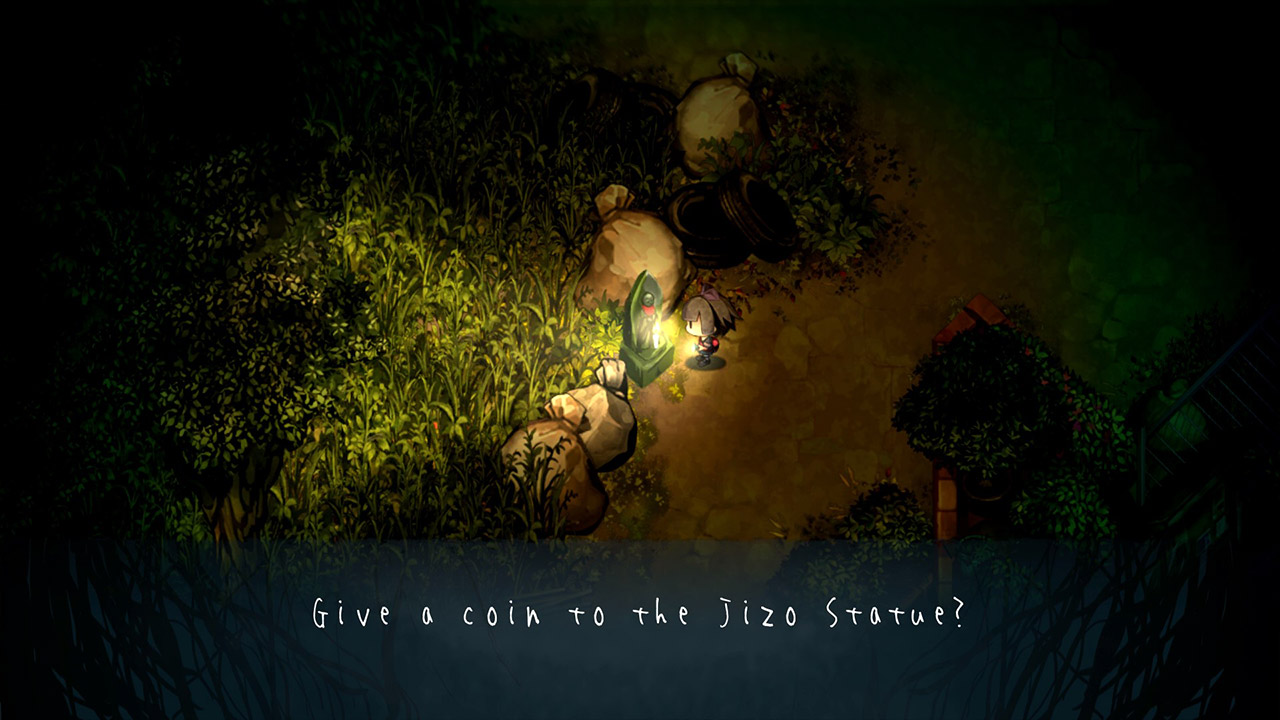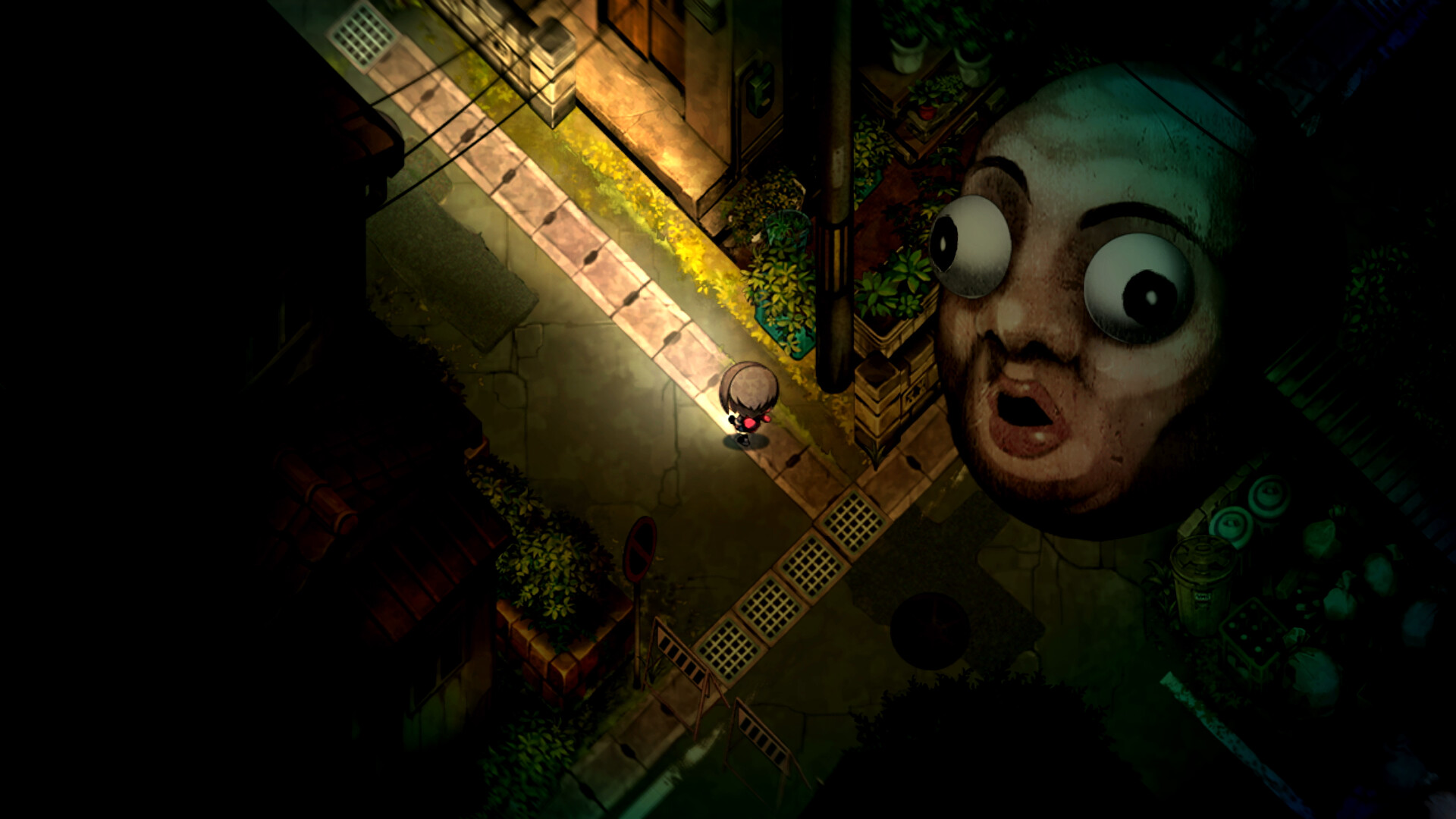Halloween may be over, but do you think the residents of Yuzu’s hometown are already decorating for Christmas? Rather, the town is haunted by ghosts and monsters…and that might include Yuzu herself.
Yomawari: Lost In the Dark begins with young Yuzu being mercilessly bullied by her classmates. She endures this in a quiet and heartbreaking way until she sees her on the roof ledge of her school building, the camera pans heavenward, then pans down, only her shoes find what’s left. I know enough Japanese culture to understand the symbolism of this gesture.
However, some time later, Yuzu wakes up in a forest with no memory of how she got there (or what she just did). A young woman appears to tell Yuzu that she must fulfill a promise by 6am to break her curse, but Yuzu doesn’t even remember what the promise was. With nothing going on for her, she must search her own city for items that hopefully bring back her memory.

It was a wonderful setting, and I was surprised by the strength of the impact that I could not believe was a simple graphic. The game is played from a top-down isometric view, and the inability to see Yuzu’s reaction to bullying and the fear around her had the strange effect of making me more empathetic to her than I otherwise would have been. The game’s warnings about difficult subjects are justified and appreciated.
Still, it’s a little less stressful than you might think.Yomawari: Lost In the Dark is definitely a spooky game, with lots of well-placed scares, but it’s also a game that lets you work at your own pace. . Yuzu can take on ghost stories in any order, so players aren’t forced to force enemies to flee along the way. Exploration is a very important part of the experience.
Of course, since this is a horror game, there are quite a few obstacles that impede exploration. Different types of ghosts have to be dealt with in certain ways (covering your eyes, attacking with flashlight beams, etc.) and once you master the right methods and get over them, there will be many “deaths” along the way. will occur.

This certainly adds stress to the search, but you can always pick things up and try something else. Tips are often provided to let you know. Paying close attention to the environment and clues will set you up for battle.
I mentioned earlier that graphics are very effective in creating an unforgettable atmosphere. The lighting keeps your focus away from the shadows, and the game uses those dark areas for some sure-fire horror. It’s very helpful in making you feel like you’re in it, and therefore impactful.

Still, the audio in Yomawari: Lost In the Dark is what really pushes the game over the top. The developers recommend playing with headphones, and it’s easy to see why. The chilling effect of distant, disembodied footsteps or a baby’s cry is so effective that it’s almost inaudible, and it’s terrifying to realize they’re so close. I think the best thing to do is experience it. So I preferred playing in docked mode at night when the rest of my family was in bed, and the only thing that interfered with the surround sound was some random, unexplained household noise.
Of course I can’t tell you the ending. I don’t want to reveal how I felt about it for fear of setting the player up in some way. Unfortunately, that’s also when the game starts to lose impact. Once the repetition starts, the fear wears off and the emotional introduction starts to feel less important.
Lost in the Dark isn’t the first game in the Yomawari series, it’s actually the third. However, it can be played on its own and has enough potential to justify delving into Yomawari: The Long Night Collection, which is also available on Switch. So it remains to be seen if it offers the same satisfying gameplay and emotional story.

